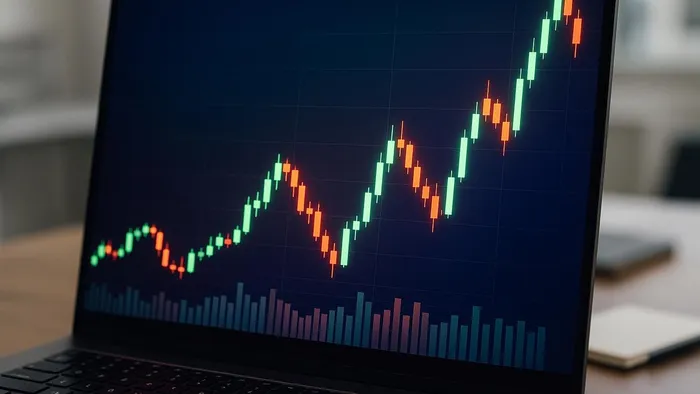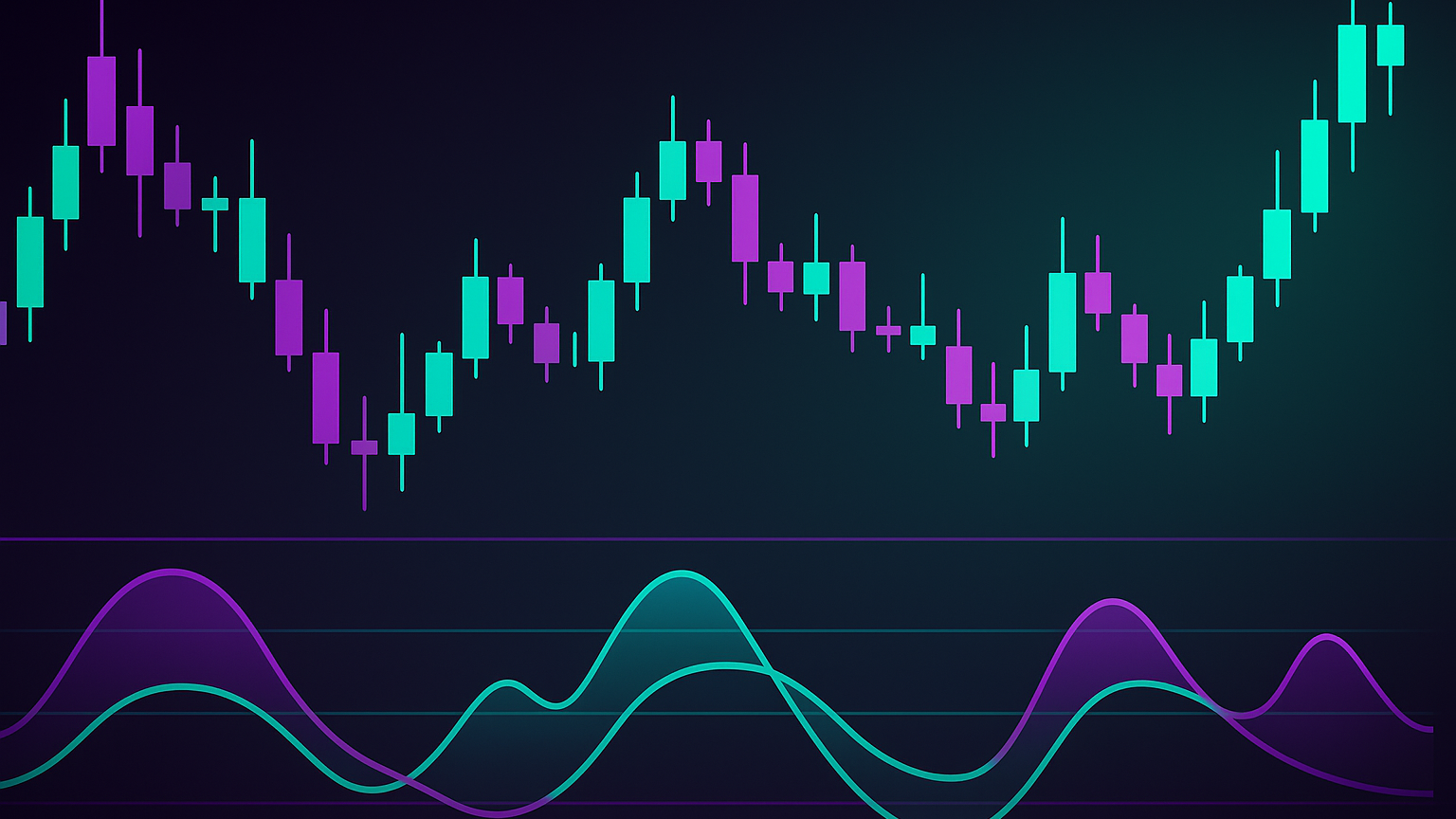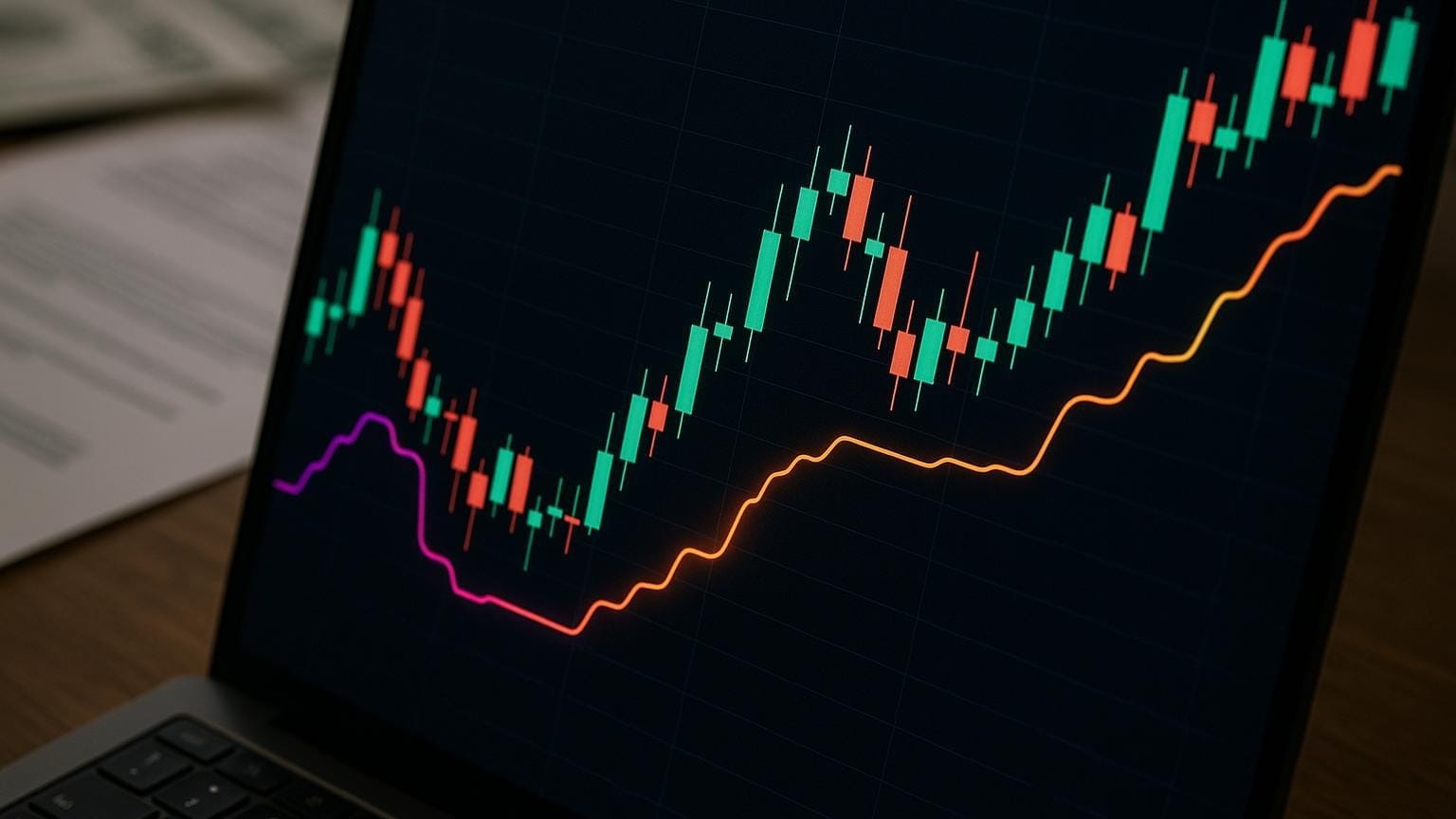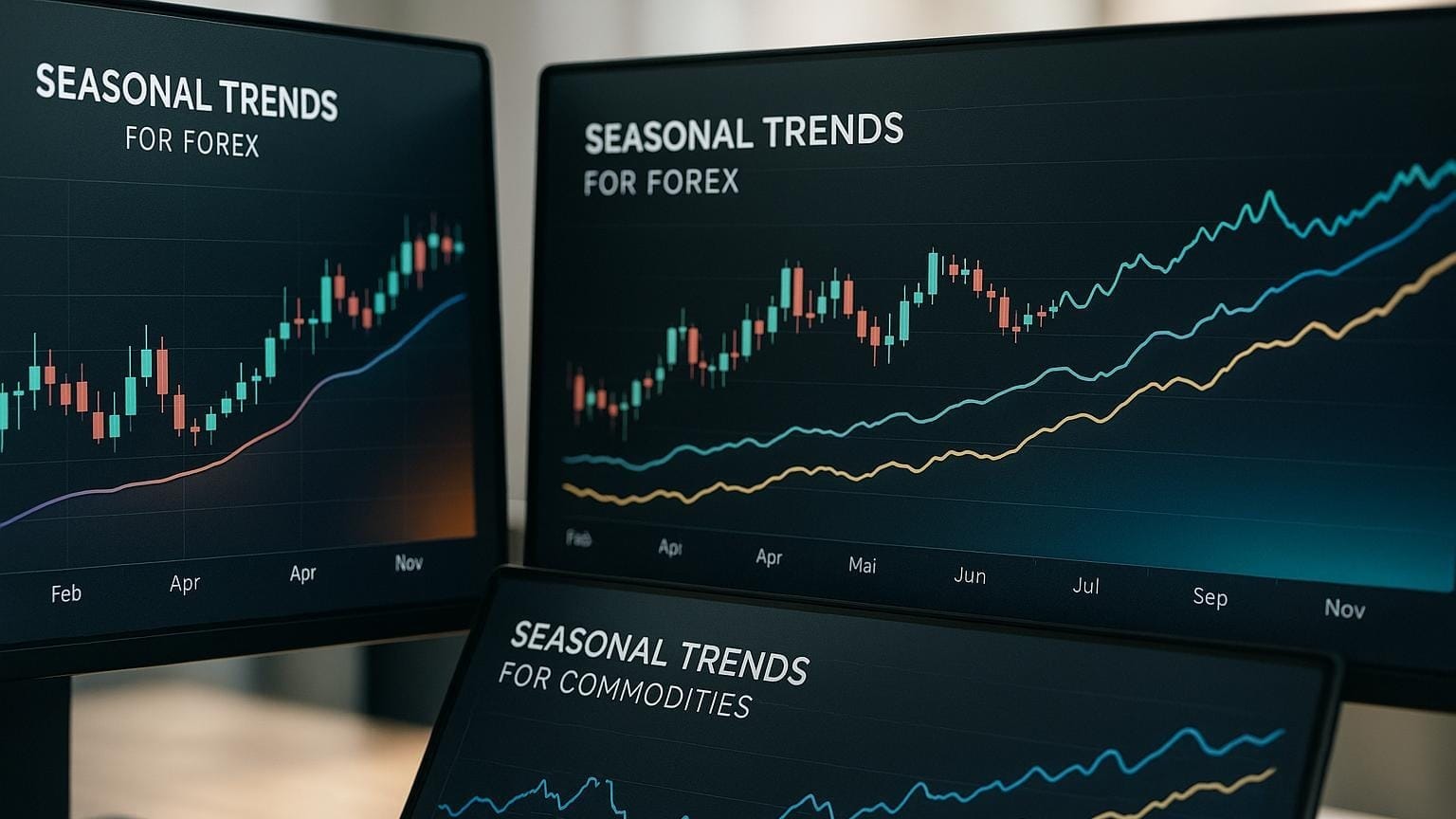Explore how stock price patterns, backed by volume analysis, outperform basic algorithms in predicting market trends and making informed trading decisions.
Key insights from the article:
- Patterns like "Cup and Handle" and "Double Top" outperform algorithms with success rates of 76.3% and 73% respectively.
- Volume analysis is critical: Patterns combined with volume trends confirm breakouts and reversals better than algorithms alone.
- Top patterns include: Ascending Triangle, Descending Triangle, Cup and Handle, Symmetrical Triangle, and Gartley patterns.
Quick Comparison of Pattern vs Algorithm Performance
| Pattern | Success Rate | Algo Equivalent | Success Rate | Best Use Case |
|---|---|---|---|---|
| Ascending Triangle | 68% | Moving Average (MA) | 52% | Bull Markets |
| Cup and Handle | 71% | MACD Histogram | 48% | Range Bound Markets |
| Descending Triangle | 59% | Bollinger Bands | 37% | Bear Markets |
| Symmetrical Triangle | 59% | Trend Following | 42% | Volatile Conditions |
| Gartley | 51% | RSI-based Strategies | 49% | Reversal Scenarios |
Why patterns win: They reflect market psychology and integrate volume analysis, capturing nuances that algorithms miss. LuxAlgo provides automated pattern detection and backtesting, saving time while improving accuracy.
Stock Price Pattern Basics
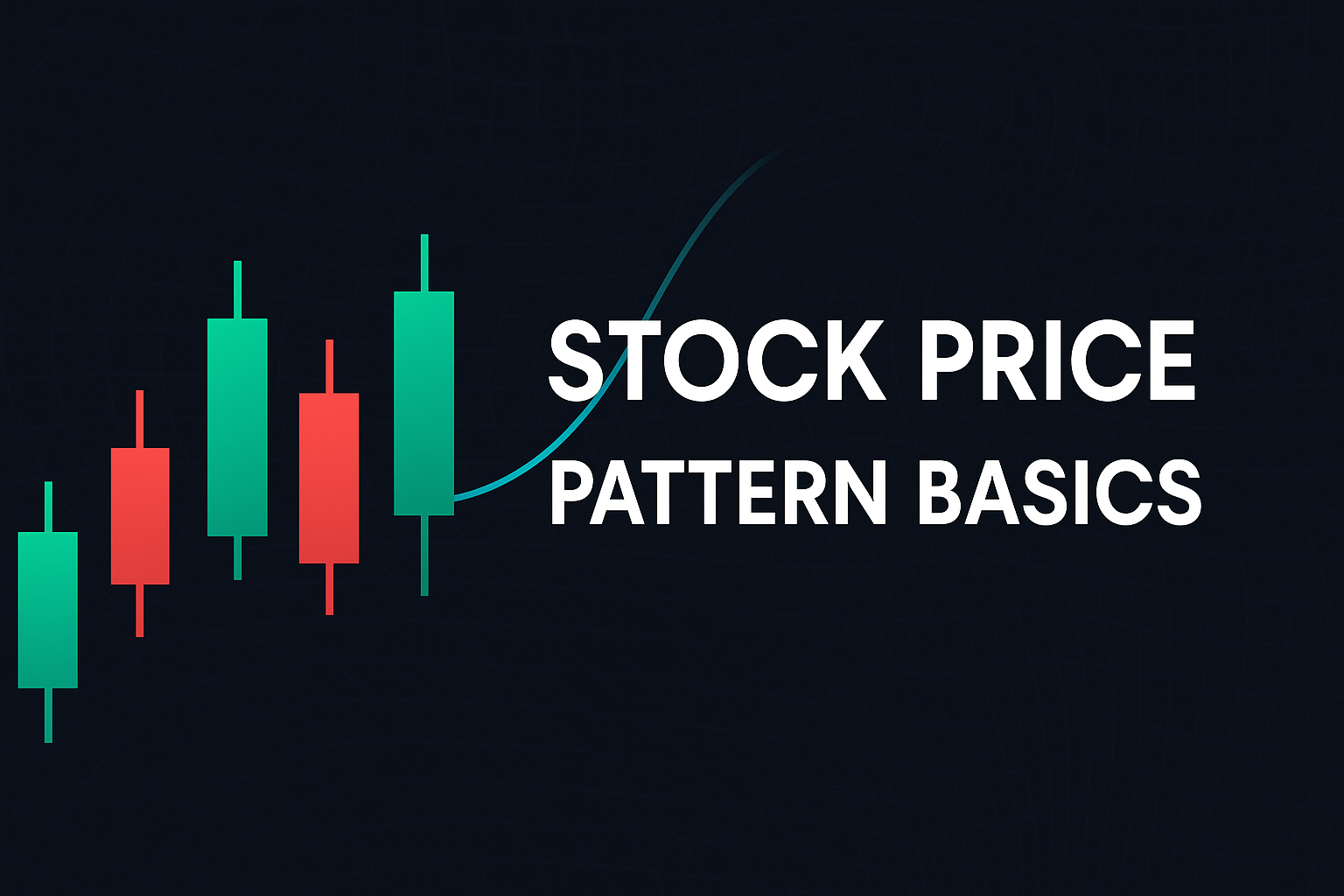
What Are Stock Price Patterns
Stock price patterns are specific formations in price data that can help forecast market trends. These patterns usually emerge during times when prices stabilize or consolidate. By reflecting complex market behaviors, they provide insights that go beyond what simpler trading methods can reveal.
Charts play a key role in identifying these patterns. Candlestick and bar charts, for instance, offer a detailed view of price ranges and market sentiment. Let’s dive into how volume analysis adds another layer of depth to these patterns.
Volume and Price Action Analysis
Volume analysis is a critical tool for understanding price movements. The relationship between trading volume and price action helps traders assess the strength of a pattern and the likelihood of a sustained price move.
Here are some recent examples that highlight the importance of volume analysis:
| Stock | Time Period | Price Movement | Volume Trend | Outcome |
|---|---|---|---|---|
| Apple (AAPL) | May to Jun 2024 | +12% | Rising | Strong bullish signal |
| Tesla (TSLA) | Oct 7 to 11, 2024 | -10% | Increasing | Confirmed downward pressure |
| Netflix (NFLX) | Apr to Jun 2024 | +27% | Falling | Followed by an 11% decline |
"Volume is the market's polygraph test, it helps separate genuine price moves from deceptive shifts in the market." – Investopedia
When combining volume analysis with price patterns, traders often focus on these key indicators:
- Breakout Confirmation: High volume during a breakout indicates the move is more likely to hold.
- Trend Momentum: Rising prices alongside increasing volume suggest strong upward momentum.
- Reversal Warnings: Declining volume during a price rise can hint at a potential trend reversal.
For instance, when Wells Fargo & Co. (WFC) saw its stock drop 17% between June and October 2020, the simultaneous decline in trading volume signaled a weakening downtrend. By blending price patterns with volume analysis, traders can uncover subtle market signals that algorithms might miss. Understanding these fundamentals is a crucial step before tackling more advanced stock price patterns.
5 Top-Performing Stock Price Patterns
Ascending Triangle Pattern
The ascending triangle pattern signals a potential bullish continuation in an uptrend. It forms when prices create a horizontal resistance line at the top while progressively making higher lows, resulting in an upward-sloping support line. Traders typically look for a breakout above the resistance, with profit targets calculated by adding the triangle's height to the breakout price.
| Pattern Component | Key Characteristics | Trading Implications |
|---|---|---|
| Resistance Line | Horizontal upper boundary | Serves as the breakout level |
| Support Line | Rising lower boundary | Shows growing buyer interest |
| Volume | Increases during breakout | Confirms the pattern's validity |
Descending Triangle Pattern
The descending triangle pattern suggests a bearish continuation. It features a horizontal support line at the bottom and a descending trendline above, indicating increasing selling pressure. A break below the support line often signals an opportunity for short trades.
Symmetrical Triangle Pattern
A symmetrical triangle forms when price movements create converging trendlines with similar slopes, reflecting a phase of consolidation. The eventual breakout direction indicates the likely future price trend. For example, tech stocks may show higher lows and lower highs over an extended period, forming this pattern.
Cup and Handle Pattern
The cup and handle pattern is a bullish continuation setup. It resembles a teacup, with the "handle" being a slight downward drift on the right side. This pattern often suggests a shift in momentum toward upward price movement.
Gartley Pattern
The harmonic Gartley pattern relies on specific Fibonacci ratios to identify potential reversals:
| Component | Key Ratio |
|---|---|
| AB | 61.8% of XA |
| CD | 127.2 to 161.8% of BC |
Its precision comes from the Fibonacci-based structure, making it a useful tool for identifying high-probability setups. Next, we'll explore how these patterns compare to basic algorithms in practical trading scenarios.
Pattern Analysis vs Basic Algorithms
Weaknesses of Basic Algorithms
Basic algorithmic trading systems often fall short because they rely on rigid, formulaic rules that fail to account for the complexities of the market. These systems typically use fixed parameters, such as moving average crossovers or static price thresholds, which struggle to adapt to changing market conditions.
Here are some common limitations of basic algorithms:
| Limitation | Impact | Example Scenario |
|---|---|---|
| Fixed Parameters | Struggle with market changes | Moving average strategies falter during volatility |
| Single Data Points | Miss contextual information | Algorithms fail to confirm trends with volume data |
| Linear Analysis | Overlook complex patterns | Trend-following systems miss potential reversals |
These limitations emphasize the need to go beyond rigid systems and consider the psychological aspects of trading, where emotions like fear and greed can lead to unpredictable market shifts.
The Role of Market Psychology
Market psychology plays a major role in shaping price patterns, often making simple algorithms ineffective. As Professor Krupa Desai from SNHU explains:
"Investor emotions like fear and greed often drive market anomalies."
Price patterns reflect these psychological dynamics by:
- Highlighting crowd behavior through price movements.
- Accounting for emotional extremes in market sentiment.
- Pinpointing potential reversal points based on collective trader behavior.
This psychological perspective makes pattern analysis particularly valuable in understanding and navigating dynamic markets.
Integrating Multiple Signals
In addition to psychology, combining various market signals enhances the effectiveness of pattern-based strategies. Unlike basic algorithms, which often rely on a single metric, pattern analysis benefits from integrating multiple signals to improve trading accuracy:
| Signal Type | Benefit of Pattern Analysis |
|---|---|
| Volume Analysis | Confirms price movements by analyzing trading activity |
| Price Action | Identifies critical support and resistance levels |
| Market Sentiment | Gauges fear and greed using tools like the VIX |
| Trend Analysis | Provides context by analyzing trends across timeframes |
Technical tools like On-Balance Volume (OBV) and Accumulation/Distribution (A/D) indicators are often used alongside pattern recognition to gain deeper insights into market sentiment. This multi-dimensional approach allows traders to identify stronger, higher-probability setups, offering a clear edge over single-metric algorithmic strategies.
Pattern analysis stands out because it synthesizes multiple market factors and incorporates psychological insights, providing a more comprehensive and adaptive framework for traders compared to the rigid nature of basic algorithms.
Using LuxAlgo for Pattern Trading
Pattern Detection Tools
LuxAlgo’s Price Action Concepts (PAC) toolkit simplifies identifying key chart patterns such as ascending triangles and cup-and-handle formations. With this automated approach, traders no longer need to sift through charts manually.
Here’s what the toolkit offers:
| Feature | Function | Advantage |
|---|---|---|
| Auto-Pattern Detection | Recognizes formations across timeframes | Saves time and effort |
| Market Structure Analysis | Maps support and resistance levels | Provides trading context |
These tools not only identify patterns but also integrate with performance testing features to help refine trading strategies.
Testing Pattern Performance
After detecting reliable patterns, LuxAlgo’s backtesting tools allow traders to test their effectiveness before using them in live trading. By combining automated tools with manual reviews, traders can fine-tune strategies based on historical data.
| Testing Method | Processing Speed | Sample Size | Best Use Case |
|---|---|---|---|
| Manual Review | 20 to 30 hours for 100 trades | 50 to 100 trades per day | Verifying complex patterns |
| AI Assistant | 1 to 2 hours for 10 000 trades | Thousands per hour | Large-scale pattern testing |
| Hybrid Approach | 4 to 5 hours for 1 000 trades | 500+ trades per day | Balanced analysis |
Key metrics to monitor during testing include:
- Win rate percentage
- Profit factor
- Risk-reward ratio
- Maximum drawdown
- Consistency score
Once patterns are validated, LuxAlgo’s tools make it easy to screen for them across various markets.
Pattern Screening Methods
LuxAlgo’s screening features help traders pinpoint high-probability setups across different markets. For instance, the Three Drives Pattern Detector uses a multi-length swing detection method to identify opportunities.
Key screening features:
| Screening Feature | Application | Customization Options |
|---|---|---|
| Pattern Recognition | Detects advanced formations | Adjust pattern parameters |
| Quality Control | Validates identified patterns | Fine-tune precision settings |
| Market Coverage | Analyzes multiple assets | Choose specific markets |
The platform integrates seamlessly with TradingView, enabling in-depth pattern detection and analysis. Additionally, the AI Backtesting Assistant provides data-driven insights, helping traders optimize strategies with customizable settings like swing lengths, retracement ratios, and pattern quality filters.
The Ultimate Chart Patterns Trading Course (Expert In 1 Hour)
Pattern vs Algorithm Performance Data
A detailed market analysis reveals that specific stock price patterns often deliver better results compared to basic algorithms. Over a 10-year period (2015 to 2025), pattern trading achieved an annualized return of 64%, outperforming basic algorithms, which returned 47%. Additionally, pattern trading experienced lower drawdowns. The table below highlights key metrics comparing various patterns with their algorithmic counterparts.
| Pattern Type | Success Rate | Algo Equivalent | Success Rate | Market Condition | Key Advantage |
|---|---|---|---|---|---|
| Ascending Triangle | 68% | MA Crossover | 52% | Bull Market | Better accumulation detection |
| Cup and Handle | 71% | MACD Histogram | 48% | Range Bound | Pre-breakout identification |
| Gartley | 51% | RSI-based | 49% | Reversal | Fibonacci and harmonic confirmation |
| Symmetrical Triangle | 59% | Trend Following | 42% | Volatility Squeeze | Crowd psychology insight |
| Descending Triangle | 59% | Bollinger Bands | 37% | Bear Market | Reliable support/resistance detection |
Real-world examples further illustrate this advantage. For instance, NVIDIA (NVDA) in Q3 2024 formed a Cup and Handle pattern, resulting in a 19.9% gain (entry at $612, exit at $734). In contrast, mean-reversion algorithms posted a 5.3% loss during the same period.
The risk-adjusted returns also highlight the strength of pattern trading:
"Pattern trading strategies achieved a Sharpe ratio of 1.8 in backtests between 2015 to 2025 on S&P 500 data, significantly outperforming RSI-based algorithms, which recorded a 1.2 ratio", according to the CMT Association's 2024 Pattern Performance Report.
Why Patterns Outperform Algorithms
The data underscores how integrating market psychology and volume analysis gives pattern-based strategies an edge over purely algorithmic approaches. Here's why:
- Market Psychology Matters
Patterns like the Cup and Handle capture subtle market behaviors that algorithms often miss. For example, this pattern identifies the "shakeout" phase before breakouts, offering a 1:3 risk-reward ratio compared to the 1:2 ratio typical of algorithmic strategies. - Handling Volatility
During volatile periods, such as earnings seasons, algorithms relying on Bollinger Bands fail 63% of the time. Meanwhile, Descending Triangle patterns maintain a 59% accuracy rate, proving more reliable in turbulent conditions. - The Role of Volume
LuxAlgo’s research shows that combining pattern recognition with volume analysis can cut false signals by up to 37% compared to algorithm-only strategies. Their Multi-Timeframe Volume Divergence tool, for instance, has been particularly effective in refining Ascending Triangle setups.
While algorithms excel at quick execution, they often overlook critical elements of market psychology that patterns capture. This is why institutional traders are increasingly blending both approaches. In fact, 42% of hedge funds now incorporate pattern recognition alongside algorithmic systems.
Conclusion
Stock price patterns reveal insights into market behavior and institutional actions that standard algorithms often overlook. This creates a demand for tools designed to tackle these complexities.
LuxAlgo provides a range of tools tailored for pattern-based trading. Its Price Action Concepts (PAC) toolkit helps traders identify high-probability setups while cutting through market noise.
For traders of all levels, LuxAlgo offers flexible plans to meet different needs. The Free plan ($0) provides access to hundreds of indicators in the LuxAlgo Library across multiple charting platforms. The Premium plan ($39.99/month) adds advanced signals, alerts, and oscillator tools on TradingView. The Ultimate plan ($59.99/month) includes everything in Premium plus full access to LuxAlgo’s AI Backtesting platform and strategy validation features.
FAQs
Why does the 'Cup and Handle' pattern often outperform basic trading algorithms?
The 'Cup and Handle' pattern is a reliable bullish continuation signal that often outperforms basic trading algorithms due to its ability to capture market psychology and trends. The pattern consists of a rounded "cup" shape, representing a period of consolidation, followed by a smaller "handle", which often indicates a brief pullback before a breakout.
Key factors contributing to its success include the duration of the pattern's formation, volume trends, and adherence to specific technical criteria. For instance, the handle typically stays above the 50% Fibonacci retracement level and in the upper half of the cup's height. Volume also plays a crucial role, with a decrease during the cup's formation and an increase during the breakout phase, signaling strong buying interest.
Historically, this pattern has shown high success rates, improving over time, around 70% in the short term (1 year) and up to 85% in the long term (10 years). Its structured nature and ability to adapt to market conditions make it a valuable tool for traders looking to enhance their strategies.
How does volume analysis improve the reliability of stock price patterns?
Volume analysis is essential for evaluating the strength and reliability of stock price patterns. When a breakout is accompanied by high trading volume, it often signals strong market participation, which increases the likelihood of a sustained price move.
On the other hand, low volume during a breakout may indicate weak market interest, making the pattern less reliable. By incorporating volume analysis into your trading strategy, you can better assess the validity of price movements and make more informed decisions.
How are stock price patterns more effective than basic algorithmic trading strategies?
Stock price patterns are often more effective than basic algorithmic trading strategies because they reflect market sentiment and capture intricate relationships that simple algorithms may overlook. These patterns help traders interpret historical price movements and predict future trends, offering a deeper understanding of market dynamics.
While algorithmic trading excels at speed and efficiency, it typically relies on rigid rules and historical data, which can limit its adaptability to sudden market changes. Stock price patterns, on the other hand, allow traders to analyze real-time market behavior and make more informed decisions, particularly in volatile or unpredictable conditions.


